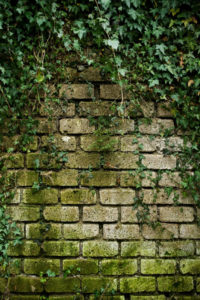 Climbing plants and vines might seem like a whimsical addition to the exterior of your home. Unfortunately, recreating this classic curb appeal can cause serious damage to your masonry. If you have climbing vines on your chimney, take advantage of the first freeze of the year and remove them; roots and tendrils are easier to remove as they dry out during the winter, and doing so can help protect your chimney.
Climbing plants and vines might seem like a whimsical addition to the exterior of your home. Unfortunately, recreating this classic curb appeal can cause serious damage to your masonry. If you have climbing vines on your chimney, take advantage of the first freeze of the year and remove them; roots and tendrils are easier to remove as they dry out during the winter, and doing so can help protect your chimney.
How vines damage your masonry
While climbing vines such as ivy and wisteria can be charming, they can also cause significant damage to your masonry. The following are the three major ways that climbing plants cause chimney damage.
- Trapped moisture: A thick layer of vines and leaves can leave little room for sunlight to shine through. This dark and damp environment traps moisture next to or on the surface of the masonry.
- Insects: Vines can be home to many insects; unfortunately, these climbing plants can give bugs and pests direct access to your home, wood trim, and siding.
- Roots and tendrils: Climbing plants need something to grip as they grow; for vines growing onto masonry, their roots and tendrils can create cracks and holes in the bricks and mortar as a way to grip and grow.
Climbing vines and the risk of fire
If you want to keep the vines on your chimney, winter is still a good time to have them trimmed. Dry, brittle branches near the top of the chimney can increase the risk of fire during the winter; stray sparks and embers from the chimney can land on and easily ignite the drying plants. Removing them from the area around the top of the chimney can protect the chimney while also preventing accidental fires.
Removing vines from the chimney
Because the roots and tendrils of climbing plants go directly into the masonry, removing them can be difficult. Removing vines is often easier after the first freeze of winter; the cold temperatures cause the vines to become dry and brittle, making them easier to cut, pull down, and remove.
If you plan on removing the entire plant, cutting off the vines at the roots or base is most effective. Doing this prevents the rest of the plant from getting nutrients, and the vines will eventually die and fall away on their own. It is not recommended to forcibly pull vines off of the masonry as it can cause more harm than good. If they have been growing for long periods of time their tendrils might be deep; pulling them away from or off of the masonry can even bring the bricks or mortar with them.
Climbing vines might seem like a charming way to add curb appeal to your home, but they can actually cause serious damage to your masonry. This year, take advantage of cold winter temperatures and remove vines roots and tendrils as they dry out; removing vines may exposure underlying chimney damage that needs to be repaired quickly. For more information on how vines can damage your chimney, contact Jack Pixley Sweeps today.
